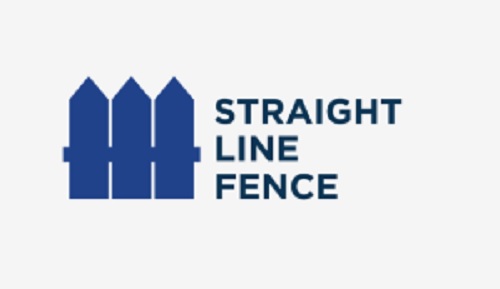In the world of civil engineering and environmental protection, the demand for innovative and sustainable solutions has led to the widespread use of Geocell technology. Geocells, also known as cellular confinement systems, offer a remarkable solution for soil stabilization, erosion control, and infrastructure development. These geo cellular structures are designed to provide support to the soil by confining it within a three-dimensional grid, enhancing the strength and stability of various terrains. In this article, we will explore the uses, advantages, and growing market for geocells, particularly focusing on the role of Geocell suppliers in India, Geocell material in Ahmedabad, and Geocell manufacturers in India.
What Are Geocells?
Geocells are three-dimensional structures made from high-strength geosynthetic materials, typically composed of HDPE (High-Density Polyethylene) or other durable polymers. These materials are used to create a series of interconnected cells that form a “honeycomb-like” structure. The cells are typically filled with soil, gravel, or other granular materials, which are confined within the walls of the geocell. This confinement prevents soil erosion, enhances load-bearing capacity, and improves the overall stability of the ground.
Geocells are commonly used in various civil engineering applications, including road construction, slope stabilization, embankment construction, and drainage systems. The technology is highly versatile and can be used in both temporary and permanent applications, making it an essential tool for engineers and construction professionals worldwide.
Benefits of Geocells
- Soil Stabilization: Geocells are widely used for stabilizing weak or loose soils. When filled with soil, gravel, or other materials, geocells create a stable base that can support heavy loads without causing the soil to shift or erode. This makes geocells ideal for use in areas where traditional soil stabilization methods may be ineffective.
- Erosion Control: Geocells provide an effective solution for controlling soil erosion in areas prone to heavy rainfall or water runoff. By confining the soil within the cells, geocells prevent the soil from washing away, which is especially important in coastal regions, riverbanks, and steep slopes.
- Cost-Effective Solution: Compared to traditional soil stabilization methods, such as concrete or asphalt, geocells offer a more affordable and sustainable alternative. The materials used in geocells are lightweight and easy to transport, which further reduces costs associated with material handling and installation.
- Improved Load Distribution: The grid-like structure of geocells helps distribute the load more evenly across the surface, preventing uneven settling or deformation. This is particularly beneficial in areas where the soil is soft or unstable, such as marshy land or flood-prone zones.
- Sustainability: Geocells are an environmentally friendly solution. They are made from durable, recyclable materials and are designed to minimize the impact on the natural environment. By reducing the need for heavy construction materials like concrete or asphalt, geocells help reduce the carbon footprint of construction projects.
- Versatility: Geocells can be used in a variety of applications, including road construction, embankment stabilization, slope protection, and even as a foundation for buildings. Their flexibility makes them a valuable tool in a wide range of civil engineering projects.
Applications of Geocells
- Road and Pavement Construction: Geocells are commonly used in road construction projects to stabilize subgrades and improve load-bearing capacity. By preventing soil erosion and reducing the risk of pavement cracking, geocells contribute to longer-lasting and more resilient roadways.
- Slope Stabilization: In areas where slopes are prone to erosion, geocells provide an effective means of stabilization. By filling the cells with soil or other materials, geocells prevent soil from washing away during heavy rainfall or flooding, protecting the slope from further degradation.
- Drainage Systems: Geocells can also be used in the construction of drainage systems, as they help to direct water flow and prevent soil erosion. Their ability to create a stable base for water flow makes them an essential component of stormwater management systems.
- Landfills and Waste Management: Geocells are also used in landfills to stabilize the base and prevent soil erosion. They are often used in combination with other geosynthetic materials to create effective barriers and containment systems.
- Coastal and Riverbank Protection: Geocells play a vital role in protecting coastal and riverbank areas from erosion caused by water currents and waves. By confining soil and sand within the cells, geocells help to create a strong barrier that absorbs and dissipates the energy of water flow.
Geocell Market in India
India’s rapidly growing infrastructure sector has contributed significantly to the increasing demand for geocells. As the country faces challenges related to soil erosion, unstable slopes, and poor subgrade conditions, geocells have become an indispensable tool for civil engineers and construction professionals. Geocell manufacturers in India are rising to the occasion, producing high-quality geocells that meet the demands of both domestic and international markets.
Geocell suppliers in India are responsible for ensuring that these innovative products are readily available for use in construction, environmental protection, and infrastructure development. The growing awareness of the advantages of geocells, such as their cost-effectiveness and environmental benefits, has led to an increased demand for geocells in India.
One of the key hubs for geocell production and supply in India is Ahmedabad, where several manufacturers specialize in producing Geocell material in Ahmedabad. These manufacturers offer a wide range of geocell products, including custom sizes, to meet the specific needs of various projects. The availability of geocell material in Ahmedabad has made it easier for suppliers and contractors to source geocells, driving the growth of the geocell market in India.
Geocell Manufacturers and Exporters
India is not only a large consumer of geocells but also an important exporter of these products. Geocell manufacturers in India are increasingly exporting geocells to countries across the world, particularly to regions in the Middle East, Africa, and Southeast Asia, where infrastructure development and erosion control are critical concerns. Indian manufacturers are known for producing durable, cost-effective geocell products that meet international standards, which has helped establish India as a major player in the global geocell market.
Summary
Geocells are an innovative and sustainable solution for soil stabilization, erosion control, and infrastructure development. Their ability to improve the load-bearing capacity of soils, reduce erosion, and provide a cost-effective alternative to traditional construction materials has made them a popular choice across industries. With Geocell manufacturers in India producing high-quality products and Geocell suppliers in India ensuring their widespread availability, geocells have become a key component in infrastructure projects across the country. As the global demand for environmentally friendly and cost-effective construction solutions continues to rise, geocells are expected to play a pivotal role in shaping the future of civil engineering.
Frequently Asked Questions (FAQs)
1. What is the primary function of geocells?
Geocells are primarily used for soil stabilization, erosion control, and improving the load-bearing capacity of the ground. By confining soil within a 3D grid, geocells enhance the stability and strength of the soil, making them ideal for use in construction, roadways, and slope protection.
2. Are geocells suitable for all types of terrain?
Yes, geocells can be used on a wide range of terrains, including soft soils, sandy areas, and steep slopes. Their ability to stabilize various soil types makes them versatile and effective for different environmental conditions.
3. How long do geocells last?
Geocells made from high-quality geosynthetic materials like HDPE are designed to last for many years. They are resistant to UV degradation, weathering, and environmental stress, ensuring that they maintain their structural integrity over time.



